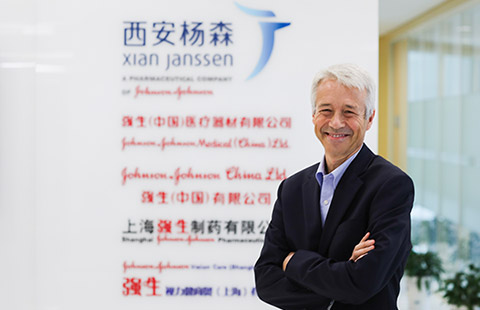China maintaining financial, social stability
Editor's Note: The Communist Party of China will hold its 19th National Congress from Wednesday. In the runup to the meeting, China Daily asked two prominent experts for their views on developments in China and the country's global leadership.
Ben Bingham, China director for the Asian Development Bank
Ben Bingham, China director for the Asian Development Bank. [Photo provided to China Daily]
Can you summarize the greatest achievements of the Chinese government and the Asian Development Bank in the past five years?

The ADB has assisted China to sustainably reduce poverty and better manage vulnerability through a robust and nationally integrated social policy, to mitigate the drivers of inequality. This involves a two-pronged approach to reduce local poverty and better protect global public goods, and to secure and smooth China's economic restructuring and transition toward a modern social services sector.
How do you rate China's economic growth and business opportunities in the past five years? What is the biggest challenge it faces, and how can it overcome it?
Over the past five years, the government has managed to maintain sufficiently high GDP growth and ensured economic, financial and social stability. It has also made progress in implementing reforms in most of the roughly 60 areas of reform outlined by the Party in November 2013.
With growth on a more solid footing at this juncture, the policy focus has shifted more to addressing risks to financial stability. Once implemented, the decisions made at the National Financial Work Conference will further mitigate financial risks by providing an institutional framework for sector regulators to work together to head off incidents and contain their fallout.
Another challenge is to find the right balance between government intervention and letting markets play a decisive role. Substantial progress has been made over the past two years; for instance, with reducing excess industrial capacity and the housing overhang, and government intervention played a critical role here. However, it is also broadly accepted that well-regulated and competitive markets are critical for increasing economic efficiency and productivity. This is exactly what China needs to achieve a high-income economy in the coming years.
What valuable experiences can China offer other regions and countries to boost their own development?
From its opening-up in 1978 to 2016, China achieved a consistent annual growth rate of almost 10 percent. This growth rate is phenomenal, and has led to the country becoming one of the top economies in the world.
In addition, the fruits of this rapid growth were broadly shared. Living standards rose tremendously, and there have been many achievements in eradicating poverty. During these years of rapid economic growth, China has managed to lift more than 800 million out of poverty. By its own thresholds, poverty in urban areas has largely been eradicated, and the country is on track to eliminate rural poverty by 2020 as planned. In 2016, only 43.3 million rural poor remained (compared with 122.4 million in 2011).
One reason for its success is that it has devoted a large portion of its GDP to infrastructure investment compared with other developing countries in Asia. China has shown how an economy can achieve rapid growth by drawing on market systems and open trade and investment relations with partner countries. The government's five-year plans, with their clear vision, have played an important role, and have helped attract private sector investment in infrastructure.
Can you tell us a bit about the progress that has been achieved in projects co-financed by the Asian Infrastructure Investment Bank and the ADB?
The ADB signed a memorandum of understanding with the AIIB (on May 2, 2016) to strengthen cooperation, including through jointly financing projects. We hope to broaden our partnership in the spirit of collaboration, rather than competition. The ADB has already co-financed four projects with the AIIB.

























